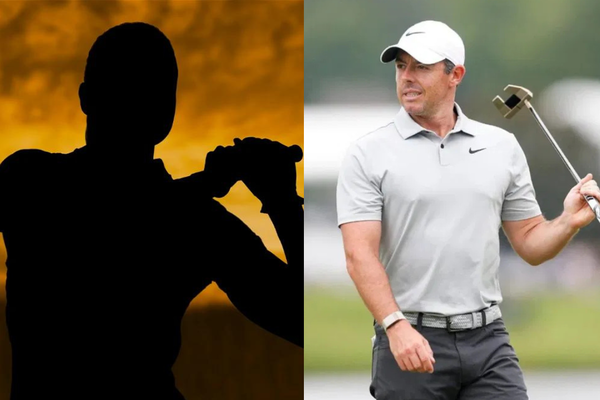
via Imago
Source Credit: IMAGO

via Imago
Source Credit: IMAGO
As a golf fan, you get excited when an event is just around the corner. You visit the venue on the day or tune in to the live broadcast, all is dandy well until you realize that it’s been more than 5 hours and the round is still continuing. Well, you’re not alone if you’ve watched a golf round and felt as though time has stopped. Slow play in golf is one of the most discussed topics in the game these days, sparking contentious discussions among officials, players, and spectators. Some claim that it detracts from the spectacle and turns golf into an endurance test. Some contend that the alleged “problem” is merely an exaggeration fueled by the media.
The matter has recently erupted into an intense dispute. Social media is analyzing every lengthy pre-shot routine, authorities are tightening the rules, and players like Rory McIlroy have been quite vocal about it. Even recently Kevin Kisner has joined the debate and shared his opinions regarding it. But the question still stands strong: is this just another exaggerated argument, or is golf experiencing a pace-of-play crisis? All right, let’s hear about it from Kisner.
ADVERTISEMENT
Article continues below this ad
After Rory McIlroy, Kevin Kisner shares his take on the ‘Pace of Play’ debate
On the recent Fore Play Podcast, Kisner addressed the complexities of golf broadcasting and how it affects viewers’ perception of the game’s tempo in a candid interview with hosts Riggs, Trent, and Frankie. He underlined that by choosing coverage of angles more effectively, producers may improve the watching experience. “I think the producers can do better on showing the golf at the golf time,” remarked Kisner. Producers might show other live shots and return when the golfer is ready to swing, he noted, rather than staying on a player talking about a shot with their caddie. By doing this, the impression of slow play would be minimized.
“If it takes us four hours and 48 minutes, who cares? I just don’t think that’s a big deal. Is it really affecting anybody’s life?” he stated, expressing doubts about the actual impact of cutting playtime by a few minutes.
In addition, Kisner emphasized supervisors’ crucial role in managing the play’s length. To guarantee that tournaments end at the appointed times, he said, they carefully schedule tee times, accounting for variables such as course length and difficulty. “The rules officials are really good at understanding how long it takes to play certain courses,” he mentioned. “It takes less time to play Hilton Head than it does TPC Sawgrass because of length and difficulty. And if we finish at six o’clock, who gives a sh**?” His up-front opinion contradicts the popular belief that sluggish play hurts the game. Rather than expecting professionals who are already working under time limitations to play more rapidly, he believes that the priority should be on enhancing coverage.
However, Kisner’s opinion might come off as an insult to the sister Tour, who have made leaps of improvement when it comes to slow play. So, does it mean slow play does not exist? It does, but is it as exaggerated of a problem as it seems? I guess Kisner has a point when it comes to that. However, let’s look at how the LPG Tour managed to handle this issue as the PGA Tour can definitely take some pointers.
ADVERTISEMENT
Article continues below this ad
LPGA’s new pace of play rules shake up the golf industry
The LPGA adopted a revised pace of play policy to speed up rounds and improve viewer satisfaction in response to growing concerns. Players who exceed the time limits will be fined under the new policy’s higher timing requirements. In particular, taking 6–15 seconds longer than the allotted 40 seconds will result in a one-stroke penalty, while taking 16 seconds or longer would result in a two-stroke penalty. Additionally, a fine is incurred if players only take 1 to 5 seconds extra. These rules are intended to motivate players to keep up a faster pace and shorten round durations.
What’s your perspective on:
Is slow play in golf a real crisis, or just media hype blowing things out of proportion?
Have an interesting take?

USA Today via Reuters
LPGA, Golf Damen Solheim Cup – Second Day – Fourball, Sep 5, 2021 Toledo, Ohio, USA Charley Hull of Team Europe putts on the ninth green during competition rounds of the Solheim Cup golf tournament at Inverness Club. Mandatory Credit: Aaron Doster-USA TODAY Sports, 05.09.2021 15:28:24, 16694047, NPStrans, Charley Hull, Inverness Club, Team Europe, LPGA, Solheim Cup PUBLICATIONxINxGERxSUIxAUTxONLY Copyright: xAaronxDosterx 16694047. Image Courtesy: IMAGO
Following complaints from well-known players about slow play, this effort was initiated. For instance, Charley Hull termed the situation “ridiculous” and urged severe penalties, such as removing repeat fenders from the tour. In a similar vein, Lexi Thompson highlighted the necessity of playing more quickly, implying that drawn-out rounds are alienating spectators.
ADVERTISEMENT
Article continues below this ad
Organizations like the LPGA are putting measures in place to make sure the game stays interesting and fun for everyone, even though athletes like Kevin Kisner doubt how serious the problem is. However, slow play is not an issue that can be put off as at the end of the day, not only does it affect fellow golfers but also the viewing experience of the audience. During a time when the PGA Tour cannot afford to lose viewership, maybe adopting LPGA’s approach can save Jay Monahan and co. from further backlash and criticism.
Have something to say?
Let the world know your perspective.
ADVERTISEMENT
ADVERTISEMENT
ADVERTISEMENT
ADVERTISEMENT



Is slow play in golf a real crisis, or just media hype blowing things out of proportion?